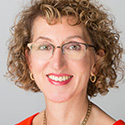10:32 AM
Infrastructure Resilience: Where Do We Go After Sandy?
Take A Regional Approach
Also emphasizing the need for a cross-entity, regional approach to catastrophes was Joseph Seebode, deputy district engineer, U.S. Army Corps of Engineers, New York District, who advocated "comprehensive planning for regional resiliency. It's an issue of, do we create a regional solution to provide resiliency, or loads of small individual projects?"
Other lessons learned" based on the Corps' experience in responding to Sandy include that "continuous education of society" regarding environmental risks, such as storm surges and wind, is essential. "The public needs to engage in educating themselves on the potential impact of storms and the risks to themselves, their neighbors and their community," Seebode said. Related to this is the need to educate the public about "risk versus protection." The Corps' projects are designed to reduce risk, but we cannot provide 100% risk reduction. You have to decide what is acceptable to you."
Seebode also advocated "integration of climate trend data into long-term land use planning and resiliency project development."
These kinds of changes in disaster response must involve participation from a wide range of interested parties, according to Dr. Holly Bamford, assistant administrator for the National Ocean Service (NOS), National Oceanic and Atmospheric Administration (NOAA). "Sandy was a turning point in the level of conversation that is happening between engineers, politicians, communities, city planners and scientists that wasn't there before," she said. "It takes not only engineers and scientists -- it's a political and community problem."
That's not to say science and technology aren't critical aspects of what must happen. Bamford called for improvements in storm surge models, calling for a "more dynamic model" that incorporates more information about tide, river and wave effects. She also urged improvement in the "social science and communications" aspects of risk management. "We need to more effectively convey risk and uncertainty related to storm surge and tidal datums. We have to understand the needs of local communicators and emergency responders. NOS is collaborating with the National Weather Service to accurately assess, predict, and communicate flooding risk. It shouldn't be after the fact. The social scientists should be at the table before we start."
Another recommendation has to do with "foundational observations and data partnerships. We have lot of observations in coastal areas, but not a lot of resources to waste." Another priority is improved inundation modeling and forecasts -- for example, NOAA took FEMA maps and overlaid them with what coastal inundation would look like in 2050 and 2100. This kind of tool is key for future planning and development, Bamford emphasized. "When thinking about where to develop or redevelop, we can't think about what it look like today." The focus should be to "position America for the future and what that future holds for coastal concerns. Risk management is an issue. Weigh the risk, and decide how you are going to proceed. Tools like this [help communities] understand risk today and in the future."
Katherine Burger is Editorial Director of Bank Systems & Technology and Insurance & Technology, members of UBM TechWeb's InformationWeek Financial Services. She assumed leadership of Bank Systems & Technology in 2003 and of Insurance & Technology in 1991. In addition to ... View Full Bio































